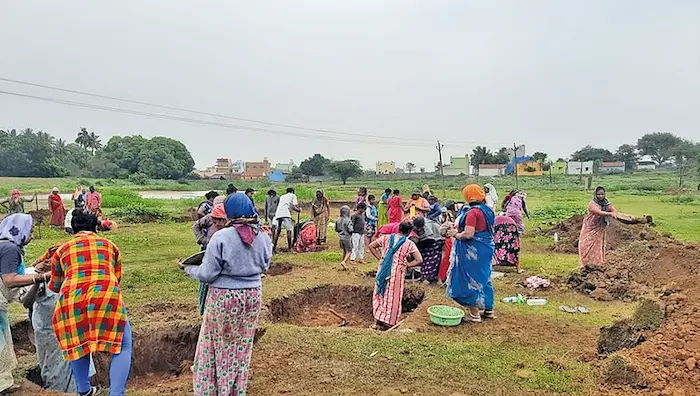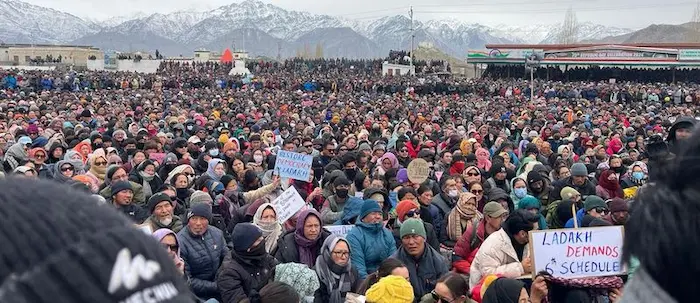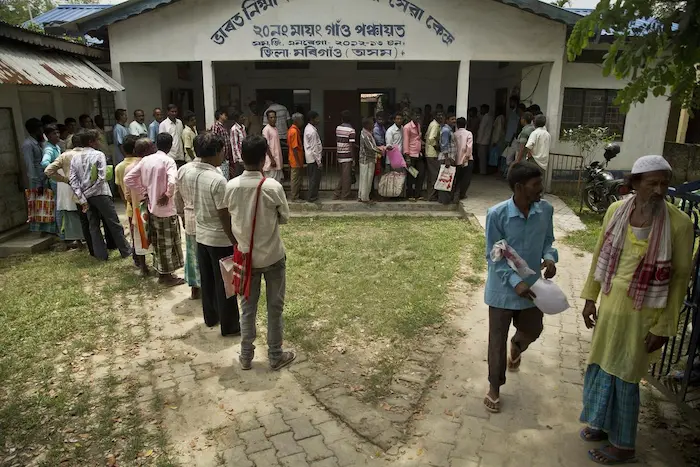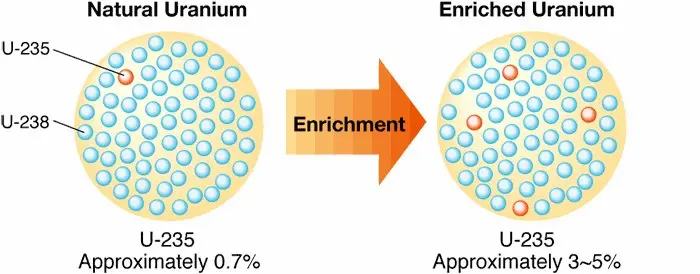1. Centre Amends MGNREGA for Water Conservation in Scarcity Zones – Governance

Why in News?
The Central Government has amended the Mahatma Gandhi National Rural Employment Guarantee Act (MGNREGA), 2005, mandating a minimum share of funds for water conservation and harvesting projects. This comes as MGNREGA completes 20 years of implementation.
Key Takeaways
- Amendment focuses on long-term water management.
- Moves from reactive drought relief → preventive groundwater conservation.
- Earmarked funds: specific allocation for water conservation & harvesting.
Additional Details
- Provision Amended: Paragraph 4(2), Schedule I of MGNREGA (2005).
- Allocation Criteria (based on CGWB groundwater stress classification):
- 65% → Over-exploited/critical (dark zones).
- 40% → Semi-critical blocks.
- 30% → Safe/non-critical blocks.
- Responsibility: District Programme Coordinator / Programme Officer to ensure compliance.
- Earlier Rule: Gram Panchayats prioritized works; 60% funds were for agriculture & allied works (including water).
- Significance: Strengthens sustainability and resilience against water scarcity in rural India.
Exam Connect – Possible Questions
Prelims
1. Under the recent amendment to MGNREGA, fund allocation for water conservation projects in over-exploited/critical (dark zone) areas is fixed at:
A. 30%
B. 40%
C. 50%
D. 65%
Answer: D. 65%
2. The amendment to MGNREGA (2005) regarding water conservation has been made in which of the following provisions?
A. Section 2(b)
B. Schedule I, Paragraph 4(2)
C. Schedule II, Paragraph 6(1)
D. Section 12
Answer: B. Schedule I, Paragraph 4(2)
Mains
1. MGNREGA has been a cornerstone of rural livelihood security. Discuss how the recent amendments to prioritize water conservation projects strengthen India’s water sustainability efforts.
2. Water scarcity in rural areas is both a developmental and governance challenge. Examine the role of employment schemes like MGNREGA in addressing water management and rural resilience.
2. Listening to Ladakh: A Call for Empowerment and Protection – Polity

Why in News?
- After Ladakh was granted Union Territory (UT) status in 2019, there has been a rise in demands for constitutional safeguards and greater local empowerment.
- These demands highlight governance challenges, ecological concerns, and India’s strategic interests in a sensitive border region.
Key Takeaways
- UT status in 2019 brought mixed reactions—administrative centralization vs. aspirations for self-governance.
- By 2021, local groups united to press for constitutional protections and local governance mechanisms.
- The issue reflects both internal federalism challenges and external geopolitical sensitivity.
Additional Details
- Historical Context:
- Ladakh has a history of loyalty and sacrifice, especially during national conflicts (e.g., 1999 Kargil War).
- Emergence of Discontent:
- Post-2019, governance centralization triggered fears of marginalization, especially over land ownership and ecological degradation.
- Community Mobilization:
- Leh Apex Body + Kargil Democratic Alliance = unprecedented unity across communities.
- Joint demands include ecological protection, cultural preservation, and constitutional safeguards.
- Strategic Necessity:
- Ladakh’s border location (China + Pakistan) makes stability critical.
- Handling grievances sensitively strengthens both national security and federal democratic values.
Exam Connect – Possible Questions
Prelims
1. Ladakh was carved out as a Union Territory in which year?
A. 2017
B. 2018
C. 2019
D. 2020
Answer: C. 2019
2. Which of the following community organizations have come together to demand constitutional safeguards for Ladakh?
A. Naga People’s Front & Bodo Council
B. Leh Apex Body & Kargil Democratic Alliance
C. Gorkha Janmukti Morcha & Bodoland Territorial Council
D. Ladakh Scouts & Dogra Union
Answer: B. Leh Apex Body & Kargil Democratic Alliance
Mains
1. The creation of Union Territories often sparks debates on centralization versus local autonomy. Discuss in the context of Ladakh post-2019.
2. Examine how Ladakh’s unique ecological, cultural, and strategic significance necessitates a governance model that balances national security with local empowerment.
3. Citizens, Domicile, Migrants: The Concern of Provincial Citizenship – Indian Society

Why in News?
- Recent debates around citizenship, domicile, and migrant rights have highlighted the tensions between national citizenship and state-level (provincial) identity.
- These issues are linked to federalism, social integration, and economic opportunity in India.
Key Takeaways
- Citizenship in India is unitary and uniform → governed by the Constitution and not by states.
- However, states often raise issues of domicile, reservations, and migrant influx, leading to tensions.
- The concern: balancing national integration with regional aspirations.
Additional Details
- Constitutional Citizenship:
- Articles 5–11 (Part II) define citizenship.
- No concept of “dual citizenship” at the state level.
- Domicile vs. Citizenship:
- Citizenship = membership of the Indian nation.
- Domicile = connection of an individual with a particular state (e.g., for jobs, education, land rights).
- Migrants’ Issue:
- Internal migration leads to competition over resources → sons-of-the-soil movements (e.g., Maharashtra, Assam, North-East).
- Raises issues of identity, culture, and employment opportunities.
- Provincial Citizenship Concern:
- States often demand exclusive rights for locals in education, jobs, or land ownership.
- Risks fragmentation of national unity and contradicts constitutional equality (Art. 14, 15, 16).
- Current Context:
- Growing debate around domicile reservations in public employment and restrictions on migrants → reflects anxieties about culture, resources, and identity.
Exam Connect – Possible Questions
Prelims
1. Which part of the Indian Constitution deals with citizenship?
A. Part I
B. Part II
C. Part III
D. Part IV
Answer: B. Part II
2. The concept of “domicile” in India is primarily relevant for:
A. Voting rights in Lok Sabha elections
B. Eligibility for public employment and state benefits
C. Granting of national citizenship
D. Membership of Parliament
Answer: B. Eligibility for public employment and state benefits
Mains
1. Internal migration in India creates both opportunities and challenges. Discuss how issues of domicile and provincial citizenship affect national integration.
2. “Citizenship in India is unitary, but federal pressures often create demands for provincial rights.” Examine with reference to recent debates on domicile-based reservations.
4. India’s Urban Blind Spot: Why Census Definitions Need Change – Governance
Why in News?
- The Registrar General of India has proposed to retain the 2011 Census definition of urban areas for the upcoming Census 2027.
- Aim → ensure comparability of data over time, but concerns arise about undercounting urbanization.
Key Takeaways
- Official urban share (2011 Census): 31.2%, though actual urbanization is believed to be much higher.
- India’s rigid urban criteria contrast with flexible global approaches.
- Retaining outdated definitions risks undercounting millions of urban residents → weakens governance and planning.
Additional Details
Criteria for Urban Classification (2011)
- Statutory Towns → Notified by state govts. with urban local bodies.
- Census Towns → must meet 3 conditions:
- Population ≥ 5,000
- ≥ 75% male workforce in non-agricultural activities
- Density ≥ 400 persons/sq. km
Limitations
- Many settlements function like towns but remain classified as rural.
- Leads to governance gaps, poor urban infrastructure planning, and underfunding.
Global Comparisons
- Other countries → use simpler measures (demographics, infrastructure).
- DEGURBA Framework (UN, 2020): Uses satellite imagery to classify urban, peri-urban, rural → better reflects ground reality.
Implication for India
- Without updated definitions, urban expansion is underestimated.
- Results in inadequate planning for housing, transport, jobs, and services.
- Crucial for India’s development trajectory → needs rethinking before Census 2027.
Exam Connect – Possible Questions
Prelims
1. Which of the following is NOT a criterion for classifying a settlement as a Census Town in India (2011 definition)?
A. Population of at least 5,000
B. At least 75% male workforce in non-agricultural activities
C. Literacy rate above 70%
D. Population density of at least 400 persons per sq. km
Answer: C. Literacy rate above 70%
2. The DEGURBA framework, recently discussed in the context of Census definitions, is associated with:
A. UN’s method of measuring urbanization
B. India’s internal migration policy
C. World Bank’s rural development index
D. IMF’s economic growth classification
Answer: A. UN’s method of measuring urbanization
Mains
1. “India’s current Census definition underestimates the scale of urbanization.” Examine the implications of this for governance and policy-making.
2. Critically analyze the challenges of urban classification in India and suggest reforms that can make urban governance more inclusive and effective.
5. Right to Cooling in the Global South – Environment

Why in News?
- The Indian government has proposed regulating air conditioner (AC) efficiency, setting operating temperatures between 20°C–28°C (default: 24°C).
- This move revives debates on cooling as a public health need, climate justice issue, and equity concern in India and the Global South.
Key Takeaways
- Potential savings: 20 billion units of electricity annually + 16 million tonnes CO₂ emission reduction.
- Cooling = Climate Justice issue → equity in access is as important as efficiency.
- Recognizing the Right to Cooling is vital for public health, productivity, and sustainability.
Access to Cooling in India & Global South
- Current Situation (India):
- AC penetration: 13% urban, 1% rural (2021).
- Disparity:
- Delhi → 32% households own ACs.
- Bihar & Odisha → only 1% despite extreme heat exposure.
- Global Comparison:
- U.S. & Japan → ~90% households own ACs.
- Sub-Saharan Africa → ~6% ownership.
- Energy Gap: U.S. per capita cooling electricity use = 28× higher than India.
Health & Productivity Implications
- Public Health Threat:
- Heat caused 489,000 global deaths (2000–2019) → India accounted for 20,000+ deaths.
- Poor housing + unreliable electricity worsens vulnerability.
- ILO Findings:
- 70% of global workforce exposed to excessive heat (2020).
- Heat exposure = injuries, deaths, productivity loss.
Policy Interventions & Heat Action Plans (India)
- Measures: Early warning systems, public shelters, awareness drives.
- Challenges: Weak institutional capacity + limited funding.
- Government’s AC efficiency move = positive step but needs complementary affordable cooling solutions for the vulnerable.
Climate Justice & Right to Cooling
- Historical Context:
- Developed countries invested heavily in heating systems; developing nations now face cooling demand without similar resources.
- Global Emissions:
- Cooling = 1 billion tonnes annually.
- Demand to triple by 2050, especially in India.
- Equity Dimension:
- Global South needs efficient + universal access to cooling.
- Bridging gap requires:
- Financial & technological support from developed nations.
- Public investment in affordable cooling infrastructure.
Exam Connect – Possible Questions
Prelims
1. According to the government’s recent proposal, what is the default operating temperature for air conditioners in India?
A. 20°C
B. 22°C
C. 24°C
D. 28°C
Answer: C. 24°C
2. As of 2021, what percentage of rural Indian households owned air conditioners?
A. 10%
B. 5%
C. 1%
D. 15%
Answer: C. 1%
Mains
1. Discuss the significance of recognizing the “Right to Cooling” in the Global South. How can it be linked to climate justice and sustainable development?
2. India’s focus on energy-efficient air conditioning is a step forward, but insufficient. Examine what additional policy measures are needed to ensure equitable access to cooling for vulnerable populations.
6. What is Uranium Enrichment? – Science and Technology

Why in News?
- Iran’s Supreme Leader announced that Tehran has limited uranium enrichment to 60% U-235 and will not pursue 90% (weapons-grade) enrichment.
- This development has major implications for nuclear non-proliferation, international relations, and regional security.
Key Takeaways
- Uranium Enrichment → increases proportion of U-235 isotope in natural uranium.
- Natural Uranium: 0.7% U-235, majority U-238.
- Types of Enrichment:
- Low-Enriched Uranium (LEU): 3–5% → civilian reactors.
- Highly Enriched Uranium (HEU): >20% → research reactors, weapons potential.
- Weapons-grade: ~90% U-235.
- Methods: Physical separation → gas centrifuges (most common).
Additional Details
Civilian Use vs Military Use
- LEU (3–5%) → power generation in nuclear reactors.
- HEU (90%+) → nuclear weapons → serious proliferation risk.
Iran Context
- Claims enrichment is for peaceful use.
- At 60%, uranium is much closer to weapons-grade than reactor-grade.
- Reduces “breakout time” → time needed to produce nuclear weapons once decision is made.
- IAEA reports → Iran holds significant 60% stockpiles, increasing suspicion.
Geopolitical Background
- JCPOA (2015): capped Iran’s enrichment at 3.67%.
- US withdrawal (2018) → deal collapsed.
- Iran now seen as nuclear threshold state:
- Gains strategic leverage in negotiations.
- Maintains deterrence without openly crossing into weapons development.
Exam Connect – Possible Questions
Prelims
1. What is the typical percentage of U-235 in natural uranium?
A. 0.7%
B. 3–5%
C.20%
D. 90%
Answer: A. 0.7%
2. The Joint Comprehensive Plan of Action (2015) capped Iran’s uranium enrichment at:
A. 0.7%
B. 3.67%
C. 20%
D. 60%
Answer: B. 3.67%
Mains
1. What is uranium enrichment? Discuss its civilian applications and potential risks in the context of nuclear non-proliferation.
2. Iran’s uranium enrichment program highlights the challenges of balancing nuclear energy needs with international security concerns. Analyze with reference to the JCPOA.

